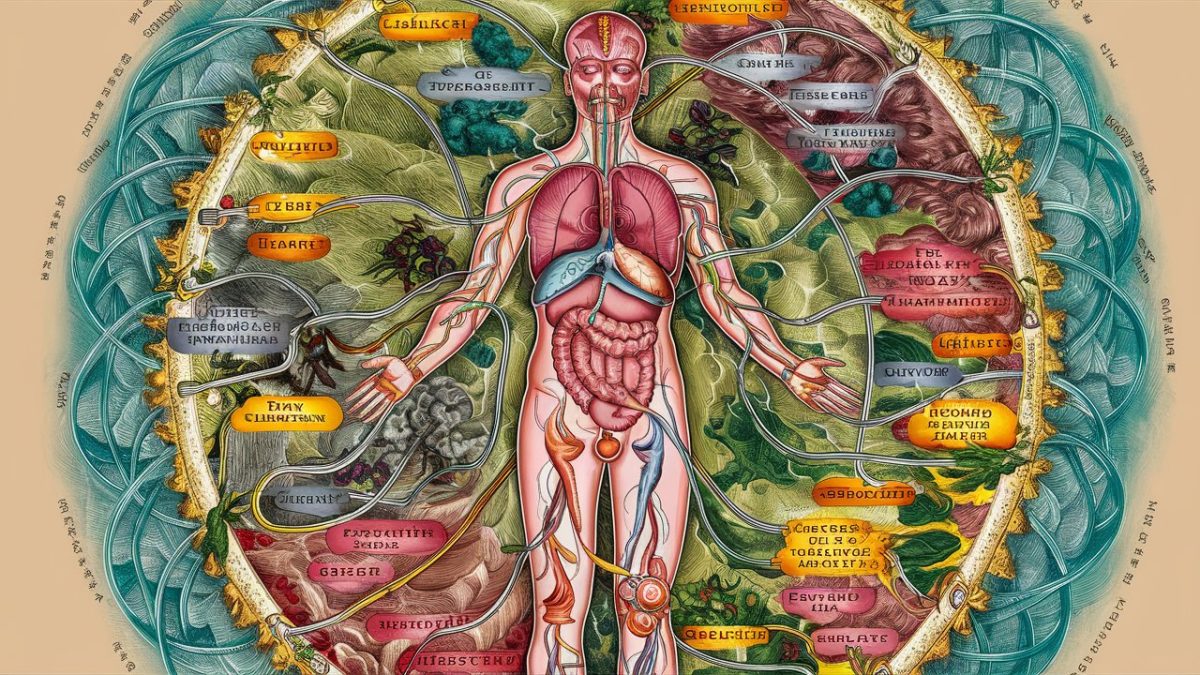Introduction
The theory of visceral manifestation is an essential component of Traditional Chinese Medicine (TCM). It focuses on the viscera, exploring the relationship between the internal structure and function of the human body, and how these structures are connected to external physiological and pathological phenomena. This article will provide a detailed introduction to the basic concepts of the theory of visceral manifestation, the functions of the viscera, and their application in TCM diagnosis and treatment.
The Basics of the Theory of Visceral Manifestation
Definition of Visceral Manifestation
Visceral manifestation, literally meaning “the form hidden within,” refers to the internal functions and external manifestations of the viscera. In TCM theory, “viscera” (Zang) refers to the five solid organs: the heart, liver, spleen, lungs, and kidneys, while “manifestation” (Xiang) refers to the external expressions of the functions of these viscera.
Functions of the Viscera
Each of the five viscera has its specific physiological functions and corresponding pathological changes:
- Heart: Governs the spirit and is related to blood circulation and emotional activities.
- Liver: Responsible for the free flow of Qi, associated with emotional regulation and blood storage.
- Spleen: Governs transformation, involving the digestion and absorption of food and the metabolism of fluids.
- Lungs: Govern the Qi, related to respiratory function and the regulation of Qi within the body.
- Kidneys: Store essence, concerning reproduction, growth, development, and fluid balance.
The Interrelationships Among the Viscera
Generation and Overcoming
There are relationships of generation (mutual promotion) and overcoming (mutual restraint) among the viscera, which are key to maintaining physiological balance:
- For example, the liver wood overcomes the spleen earth, and the free flow of liver Qi helps prevent the accumulation of dampness in the spleen.
Collaborative Functions
The viscera are interconnected and collaborate through the meridian system to jointly maintain life activities.
Application of the Theory of Visceral Manifestation in Diagnosis
The Four Diagnostic Methods
The four diagnostic methods of TCM—observation, auscultation and olfaction, inquiry, and palpation—are essential for diagnosing the state of visceral functions:
- Observation: Observing facial color, tongue appearance, and other external manifestations.
- Auscultation and Olfaction: Listening to the voice and smelling odors to judge the state of the viscera.
- Inquiry: Asking about medical history, symptoms, and other information.
- Palpation: Sensing the changes in Qi and blood of the viscera through pulse diagnosis.
Syndrome Differentiation and Treatment
Based on the information collected by the four diagnostic methods, TCM practitioners will conduct syndrome differentiation, i.e., analyzing the cause, mechanism, and location of the disease, and then choose the appropriate treatment method according to the syndrome type.
Application of the Theory of Visceral Manifestation in Treatment
Herbal Treatment
Herbal treatment in TCM is based on the theory of visceral manifestation, selecting herbs that can regulate the functions of specific viscera, such as:
- Herbs for tonifying heart Qi, such as ginseng;
- Herbs for soothing the liver and relieving depression, such as bupleurum.
Acupuncture Treatment
Acupuncture regulates the Qi and blood of the viscera by stimulating specific acupoints, promoting health:
- Heart-related issues might choose acupoints of the heart meridian;
- Liver-related issues might choose acupoints of the liver meridian.
Dietary Regulation
Diet is closely related to the functions of the viscera, and TCM practitioners will recommend adjusting the diet according to individual visceral states to achieve treatment and health maintenance.
The Theory of Visceral Manifestation and Modern Life
The Impact of Lifestyle
Modern lifestyles, such as improper diet, emotional stress, and lack of exercise, can affect the functions of the viscera, leading to health issues.
Prevention and Health Maintenance
By understanding the theory of visceral manifestation, people can better adjust their lifestyles, prevent diseases, and promote health.
Conclusion
The theory of visceral manifestation is one of the essences of TCM. It not only provides us with a method to understand the internal structure and function of the human body but also guides us on how to maintain health and prevent diseases in daily life. Through this introduction, it is hoped that readers will have a comprehensive understanding of the theory of visceral manifestation and apply it to their actual lives to achieve better health effects.
The theory of visceral manifestation in TCM, with its profound theoretical connotation and rich practical experience, provides a comprehensive view of health for modern people. By harmonizing the functions of the viscera, we can better adapt to the challenges of modern life and enjoy a healthy and harmonious life.

